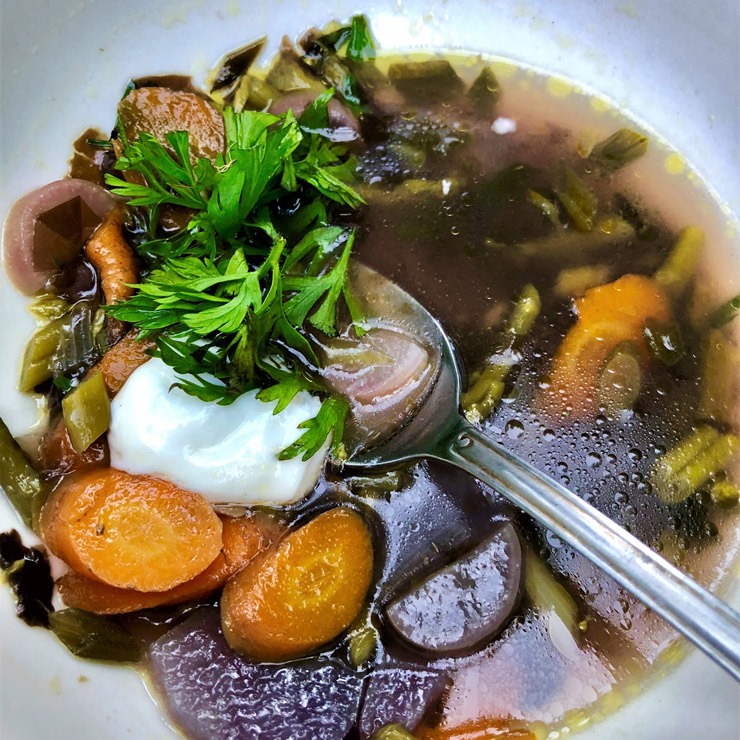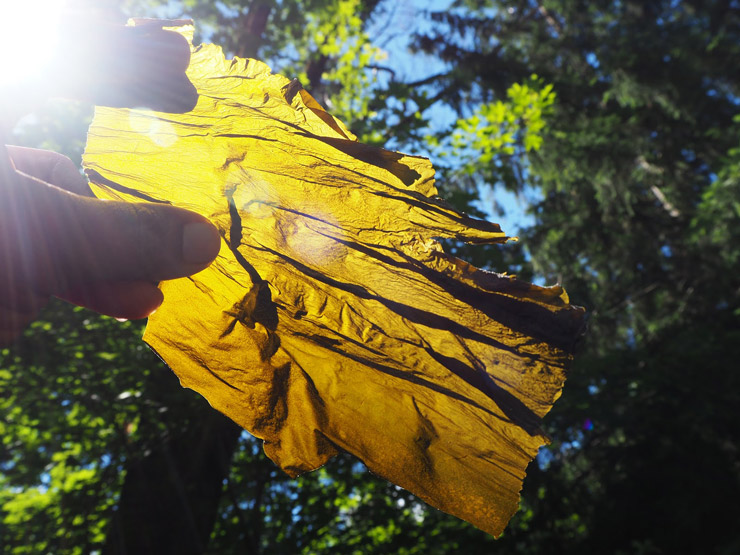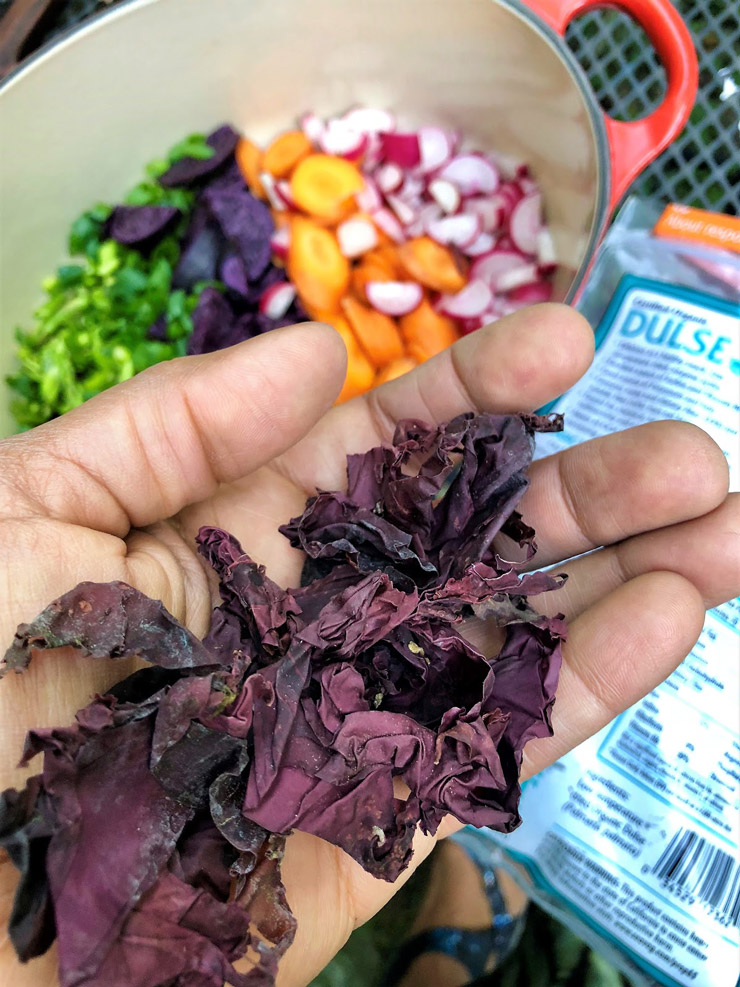
Seaweed is not just a nutrient dense food and therapeutic treat for your skin and hair — it is an extraordinary agent of change for ocean health
—
By the sea, by the sea, by the beautiful sea…
The cure for anything is salt water: sweat, tears or the sea.
Isak Dinesen
Summer is here and the ocean is beckoning. Even if you are landlocked there are ways to bring the sea’s vitality into your life. Seaweed is not only a nutrient dense food and therapeutic treat for your skin and hair, but seaweed farming is also a newly discovered and groundbreaking way to help clean up our oceans.
This past May I had the opportunity to take two amazing workshops with Angela Willard of harmonicarts.ca where she shared her knowledge and passion of all things algae.
Seaweeds are the fastest growing plant medicine on earth with giant kelp growing at a rate of 2 feet per day.
The palatable parts of seaweed are the fronds and they have up to 20x the vitamin and mineral content of land plants. 2 teaspoons of Dulse powder is higher in potassium than a banana. If you are concerned about iodine intake, Kelp is the highest in iodine content while Nori is the lowest. But don’t skip out on all of Kelp’s benefits because you are avoiding iodine. Boil your kelp for about 30 minutes and then discard the water (you can give it to your garden plants,’ they will love it). If you do want the iodine, you can add the liquid to your soups or cooking water.

Other ways to incorporate seaweed into your life are to crumble it into your salads, add flakes to your rice and throw a piece of kombu (a kelp) into your beans when cooking to make them more digestible. And no, don’t throw away the seaweed after cooking it in your beans, it actually converts rather than absorbs the enzymes that make it difficult to digest beans. I also love to munch on packages of nori snacks, the wasabi one is my favorite.
If you like to ferment and make sauerkraut, add a bit of wakame or kombu to your jar for a briny zing.
An infusion of Kelp in water is called serum and can be used as a bath tea, hair rinse or as the liquid in your mud mask. Soak a few pieces of dried kelp in distilled water (it can expand up to 40%) in a glass jar for a day in the sunlight. Then put into your refrigerator for 1 to 5 days. The cold temperature allows the alginates to come out of the seaweed giving the serum its signature slippery feel.
Strain the fronds from the liquid before use with a cheesecloth which can then be put into the freezer as an ice pack or used as a body scrub. Just be careful to not let the seaweed go down the drain, it can clog your pipes.
Seaweed is a nourishing gift for our bodies inside and out.
Here is a recipe for a farmers’ market summer vegetable and seaweed soup:
Summer Vegetable and Seaweed Soup
(This recipe calls for dulse, which is technically an alga, but is essentially a form of seaweed and is dense with nutrients)
Serves 3-4
Ingredients:
- 1 bunch green onions thinly sliced
- 3 small carrots scrubbed and thinly sliced, wash and set aside the carrot tops
- 1-2 garlic scapes thinly sliced or cloves of fresh garlic smashed and diced
- 2-3 red or breakfast radishes
- 2 small purple potatoes (or any firm fleshed potato you have)
- ½ bunch pencil asparagus ends trimmed and cut on the bias
- 1 Tbsp crushed dried mushrooms (I used sun dried yellow oysters, but porcini or wild mushroom mix will also work)
- 1/3 cup of dulse (about a handful), cut into tiny pieces using a clean pair of scissors

Directions:
- Wash and prep all the vegetables except mushrooms and dulse into a soup pot and sauté in 1 TBSP olive oil
- Stir frequently until tender and then add the crushed dried mushrooms
- Add in the dulse (it will expand)
- Stir around and then add 4 cups of water. Bring to a boil and then lower to a simmer. Cook for 15-20 minutes on a medium to low flame and then remove from heat.
- Taste and add salt if needed. Serve immediately, top with chopped carrot greens and a dollop of vegan sour cream or yogurt.
You may also enjoy Recipe: Indian Spiced Oyster & Shiitake Mushrooms Roasted in Coconut Milk (Plus A Few Tips for Foraging For Good Health) by Christine Moss